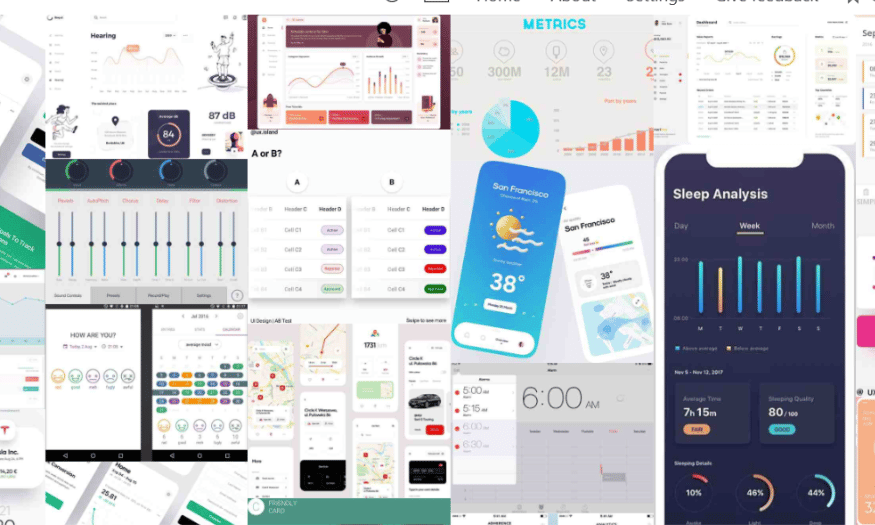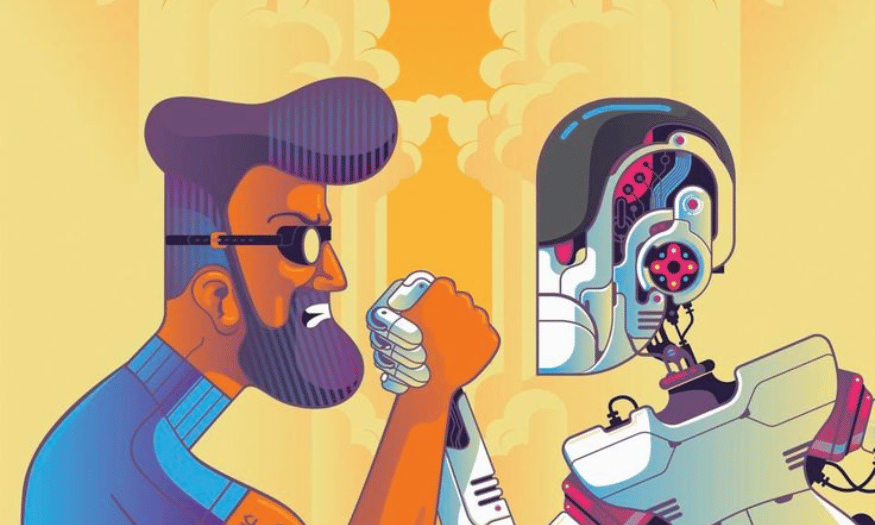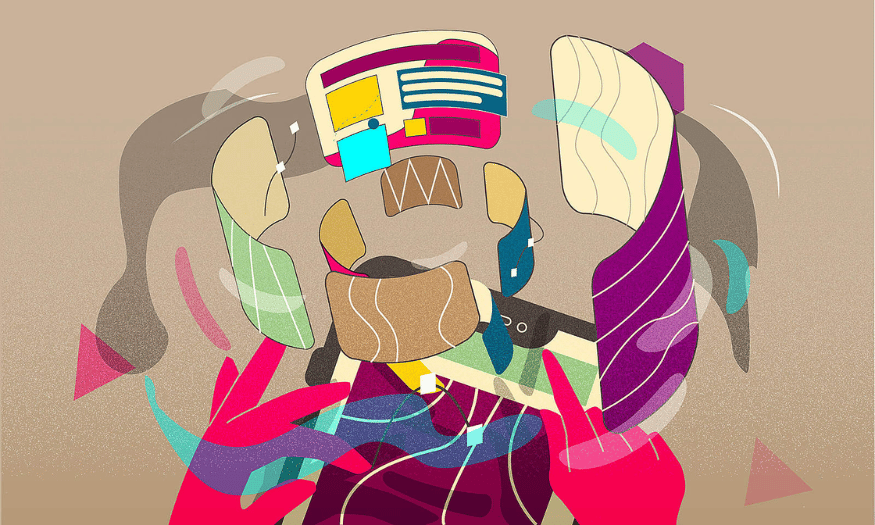Best Selling Products
The Meaning of Shapes in Design
Nội dung
- 1. Different types of shapes
- 2. The meaning of shapes in design
- 2.1 Meaning of square
- 2.2 The meaning of circles and their applications in graphics
- 2.3 Meaning of triangle
- 2.4 Meaning of organic and inorganic shapes
- 2.5 The meaning of abstract shapes
- 3. How to use shapes in design
- 4. Beautiful design support software
- 4.1 Adobe Lightroom
- 4.2 Adobe Illustrator
- 5. Conclusion
The world of design is a rich space where shapes are more than just lines or shapes; they carry deep meanings and greatly influence the emotions and perceptions of viewers. Each shape can evoke distinct symbols and messages, from the strength of a square to the softness of a circle. Understanding the meaning of shapes helps designers create more effective products, connect better with the target audience and convey messages accurately. Let's explore with Sadesign now!

The world of design is a rich space where shapes are more than just lines or shapes; they carry deep meanings and greatly influence the emotions and perceptions of viewers. Each shape can evoke distinct symbols and messages, from the strength of a square to the softness of a circle. Understanding the meaning of shapes helps designers create more effective products, connect better with the target audience and convey messages accurately. Let's explore with Sadesign now!
1. Different types of shapes
All visible matter has a shape, creating a rich universe of structures and potential meanings. This diversity not only fuels creativity, but also opens up the opportunity to categorize shapes into groups that share common characteristics. Here are some common types, each with its own unique characteristics and appeal.
Simple shapes, also known as primitives, are basic shapes like squares, circles, and triangles. They are the foundation of all design, with corresponding 3D versions like cubes, spheres, and cones. These shapes are not only easily recognizable, but also provide a sense of balance and stability.
Organic shapes, which often appear in nature, such as trees, mountains or animals, are made up of soft, asymmetrical curves. In contrast, inorganic shapes are geometric and rigid, often reminiscent of man-made objects such as buildings and machines. This contrast not only enriches the world of shapes, but also creates different emotions for the viewer.
Abstract shapes are often geometric shapes that are symbolic in nature, often appearing as symbols. They are dependent on context or prior cultural knowledge, such as human figures in signs. These shapes arouse curiosity and provoke deep reflection.
Now that we understand the different forms these shapes take, let's explore their meanings in detail.
.png)
2. The meaning of shapes in design
2.1 Meaning of square
The square, with its four equal sides and right angles, is a powerful symbol in design. This shape is often associated with stability and balance. When we look at a square, we feel a sense of solidity, as a solid foundation for everything else to build on. In many cultures, the square represents earth, reality, and stability, conveying a sense of security and reliability.
The square shape conveys seriousness and reliability. In logo design, squares are often used to convey a message of stability and reliability of a brand. For example, a square logo might evoke the image of a financial company where security and safety are paramount. Products or services represented by squares are often seen as durable and long-lasting.
In addition, the square also carries with it a sense of strength and seriousness. When used in design, it not only creates visual interest but also conveys a strong message of responsibility and integrity. Products wrapped in squares often evoke a sense of security and trust, which is important in building relationships with customers.
.png)
2.2 The meaning of circles and their applications in graphics
Circles, with their lack of corners, are almost the exact opposite of squares. Circles evoke movement, flexibility, and friendliness. When looking at a circle, viewers often feel comfortable and at ease, because the soft curves do not create a sense of pressure. Circles are often used in playful designs, aimed at children, or products that are entertaining.
Circles can also evoke images like wheels or balls, which can represent dynamism and fun. Unlike squares, circles are not limited by sharp edges, making them a popular choice for positive designs. Warm colors combined with circles can create a friendly, approachable feel, making it easy for brands to connect with customers.
In addition, the circle is also associated with high-level concepts such as eternity and infinity. The circle has no beginning or end, symbolizing continuity and cycles. This makes it a powerful symbol in many fields, from religion to philosophy. The use of circles in design is not only aesthetically pleasing but also creates deep and rich meanings.
.png)
2.3 Meaning of triangle
Triangles, with their three corners and three sides, often make us think of sharpness and strength. The image of sharp points can evoke a sense of danger, but it can also represent determination. Triangles have the ability to generate momentum and energy, making them a popular choice in design to convey messages of strength and action.
Triangles can also be seen as a symbol of direction and guidance. The three corners of a triangle can represent three different directions, much like a compass or map. This gives the triangle a strong sense of direction, making it easy for viewers to identify and understand the message it conveys. Designs that use triangles often attract attention and encourage action.
In addition, triangles also have spiritual and religious meanings. Many ancient structures, such as the pyramids, were built with triangles to represent a connection with divine forces. Triangles can represent balance and harmony in life, and also represent the connection between humans and the universe. Using triangles in design not only brings aesthetics but also enriches the deeper meanings, creating a connection with the viewer.
.png)
2.4 Meaning of organic and inorganic shapes
Organic shapes are often characterized by gentle, natural curves that give a sense of closeness and harmony with nature. They often have no fixed structure, which makes them unique and diverse. These shapes can evoke a sense of peace and relaxation, making the viewer feel comfortable and at ease. Some good examples of organic shapes include lines found in nature such as winding streams, the shapes of trees, or the shapes of animals.
However, the asymmetry and lack of structure of organic shapes also give them a sense of fragility and vulnerability. They are unpredictable and can make viewers feel unsettled. This is in stark contrast to inorganic shapes, which are clearly defined and calculated. Inorganic shapes often feel solid and stable, making them suitable for designs that require precision and clarity, such as architectural or industrial designs.
Interestingly, the combination of organic and inorganic shapes in design can create beautiful works of art. The contrast between the soft curves of organic shapes and the sharp edges of inorganic shapes can create an interesting visual experience. Designers often exploit this juxtaposition to convey a message of balance between the natural and the artificial, between freedom and control.
.png)
2.5 The meaning of abstract shapes
Abstract shapes are non-specific symbols that are often interpreted through context and cultural knowledge. They often do not have a fixed meaning and can change based on how people perceive them. For example, a simple shape like a cross can symbolize many different things; in some cultures it may represent the four seasons, while in others it is a religious symbol. This shows the richness and diversity of abstract shapes in conveying messages.
The understanding of abstract shapes also depends on the context in which they are used. In graphic design, symbols such as an ellipsis or a gear may have a clear meaning, but to those unfamiliar with the technology, these shapes may have no cognitive value. This creates a challenge for designers in choosing the right shape to ensure that the message they want to convey is understood. Careful research and cultural understanding are essential before using abstract shapes in design.
Abstract shapes are also often used to evoke emotions and thoughts. They have the ability to stimulate the imagination and create rich associations, which can open up deep discussions about meaning and messages. Therefore, abstract shapes are not just decorative elements but also powerful tools for communication and expression in art and design.
.png)
3. How to use shapes in design
When you start exploring the language of shapes in design, you can look for inspiration from professional designers on platforms like Dribbble, ArtStation, and Behance. These sites provide countless real-world examples of how shapes are used creatively in composition. Analyzing the prominent shapes in these works will help you better understand how form can influence the emotions and perceptions of your audience.
When designing, it is important to let the psychology of form work naturally, conveying messages without having to put them into words. Audiences do not consciously think about concepts like “stability” or “danger,” but rather perceive them through their senses. Therefore, designers should avoid using shapes literally. Instead, they should combine shapes with other elements to create a whole that is easy to understand and appealing.
Basic shapes are versatile tools that every designer should master. Once you understand the meaning and feeling that each shape conveys, you will be able to use them to create effective communication power. This will not only help you convey your message accurately but also create deep impressions in the minds of your audience, suitable for each marketing campaign you run.
4. Beautiful design support software
4.1 Adobe Lightroom
Adobe Lightroom is a powerful photo editing software, specially designed for photographers and photography enthusiasts. One of the outstanding features of Lightroom is the ability to manage and organize images effectively. Users can easily sort, categorize and even search for images through keywords or smart filters. This saves time, especially when working with hundreds or thousands of photos.
In addition, Lightroom offers a range of powerful editing tools, allowing users to subtly adjust the light, color, and contrast of images. Tools such as tonal adjustment, skin smoothing, and blemish removal help users create perfect photos without requiring advanced editing skills. Furthermore, Lightroom also supports batch editing, which saves a lot of time when you need to apply similar edits to multiple photos at once.
Upgrade now
Another strength of Lightroom is the ability to synchronize between devices. Users can edit photos on computers, tablets or mobile phones without losing image quality. This is very convenient for those who work with photos regularly and need flexible access. In short, Adobe Lightroom is not only a photo editing tool but also a comprehensive solution for managing and organizing images, helping to improve the quality of photographers' work.
.png)
4.2 Adobe Illustrator
Adobe Illustrator is the leading vector graphics design software, favored by professional designers worldwide. With the ability to create sharp and flexible vector images, Illustrator allows users to design logos, icons, technical drawings and many other types of images without worrying about losing quality when zooming in or out. This makes Illustrator the ideal tool for projects that require high detail and precision.
One of the standout features of Illustrator is its rich drawing toolset, which includes tools like the Pen Tool, Shape Builder, and Pathfinder. These tools make it easy for users to create complex shapes and customize them as they wish. In addition, the software also supports a variety of color formats, from RGB to CMYK, making it easy to convert between print and digital formats. With high customization capabilities, users can create unique and personal works.
Additionally, Illustrator integrates well with other applications in the Adobe suite, such as Photoshop and InDesign. This allows users to easily switch between applications and take full advantage of each software's features. For example, you can create a vector design in Illustrator and then import it into Photoshop for further editing. This makes Adobe Illustrator not just a standalone design tool, but an important part of the overall workflow of graphic designers.
5. Conclusion
In short, understanding the meaning of shapes in design is not only a technical element but also an important part of the art of communication. Different shapes not only affect aesthetics but also affect the emotions and behaviors of viewers. When designers know how to use shapes appropriately, they not only create beautiful products but also convey strong and profound messages. The combination of theory and practice will help improve the quality of design, create a difference and attract viewers effectively.












































